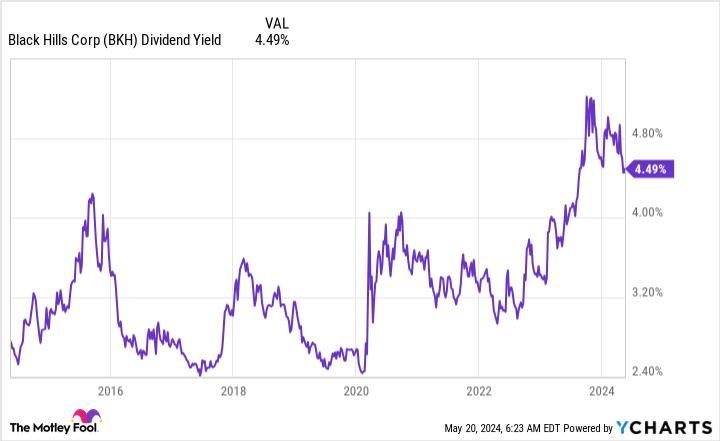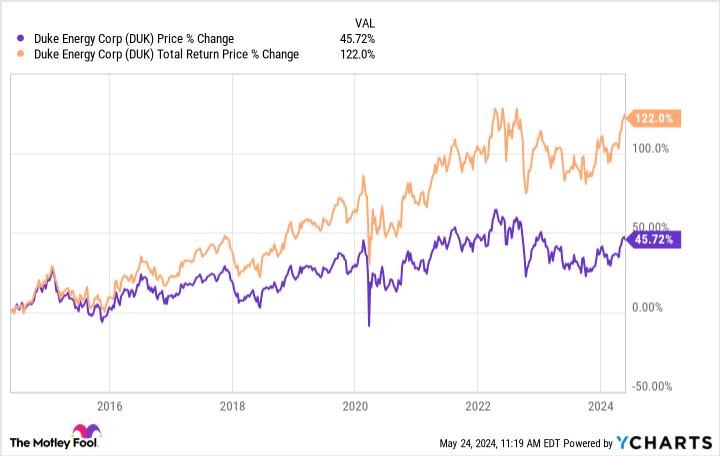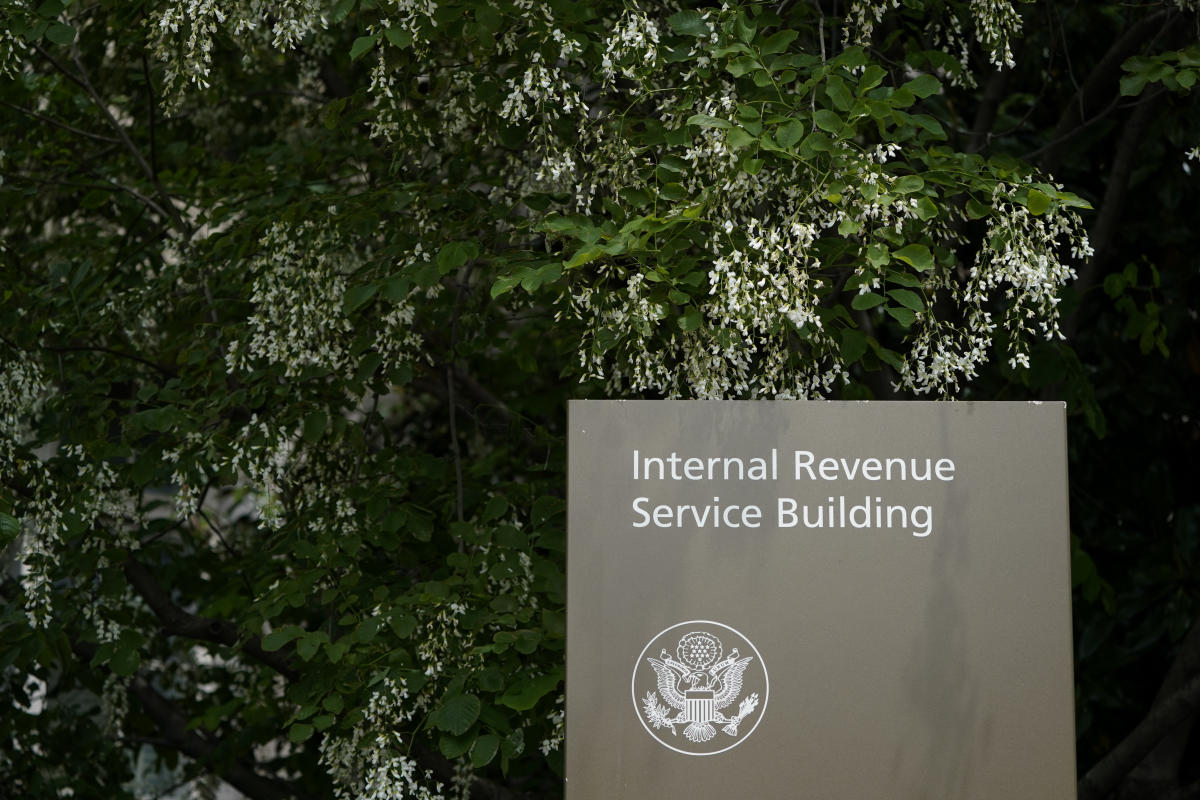Utilities run very boring businesses. They distribute electricity and natural gas to customers under government-regulated rate structures. There isn’t much upside in this sector (demand and rates are relatively stable), but there isn’t much downside either. Therefore, utilities generate fairly stable returns, much of which comes from their high-yielding dividend payments.
Investors looking to add more stability to their portfolio should consider buying boring utility stocks. Black hills (NYSE: BKH), Consolidated Edison (NYSE:ED)And Duke Energy (NYSE: DUK) stand out as great options for those looking for a high-yielding and sustainable dividend, according to some Fool.com contributors.
Black Hills is the mouse that roared
Ruben Gregg Brouwer (Black Hills): When it comes to utility stocks, Black Hills, with a market cap of $3.9 billion, is one that often slips under the radar screen. That’s a shame, because the regulated natural gas and electricity company is a Dividend King with 54 consecutive years of annual dividend increases behind it. The average dividend growth over the last three, five and ten years is all around 5%, showing incredible consistency. Meanwhile, the yield is currently around 4.5%, which is at the high end of the return range over the past decade.

In other words, Black Hills looks like it’s a Dividend King placed on the sales rack. However, there is a good reason for this, because operating a utility is a capital-intensive business. The sharp increase in interest rates will increase Black Hills’ costs in the future. There’s no way around that, while also noting that the utility tends to wield more influence than some of its larger peers.
That said, Black Hills’ customer growth has increased almost three times as fast as the growth of the U.S. population. It operates in highly attractive markets in Arkansas, Colorado, Iowa, Kansas, Montana, Nebraska, South Dakota and Wyoming. And that suggests that regulators will eventually adjust the company’s interest rate structure to take into account the change in interest rates. If you have the patience to wait for that to happen, you can collect a historically high dividend yield from a fairly boring Dividend King company.
The king of consistency
Matt DiLallo (Consolidated Edison): Consolidated Edison supplies electricity and natural gas customers in the New York City metro area. Although utilities are boring businesses, they do generate revenue terribly predictable cash flow, supported by stable demand and government-regulated tariff structures. Consolidated Edison offers that stable income to pay dividends and invest in maintaining and expanding utility infrastructure.
The utility hit a big one dividend milestone earlier this year. It achieved its 50th consecutive annual dividend increase. That’s the longest period of consecutive dividend increases among the utilities listed in the S&P500. It also brought the company into the elite group of Dividend kings. Edison’s consolidated payout currently yields just under 3.5%, which is more than double the S&P 500’s dividend yield (about 1.3% based on last year’s dividend payments).
While the company expects that If the dividend continues to rise, growth will likely be subdued. Consolidated Edison plans to focus on: dividend payout ratio of 55%-65% of adjusted profits to finance higher levels of investment in the context of the clean energy transition. That is lower than the previous target of 60% to 70%. The company plans to retain a larger portion of its profits to fund growth internally. This strategy should allow Consolidated Edison to grow its earnings per share faster in the future. That positions the country to potentially generate higher total returns if it adds its dividend income to the share price appreciation it should generate as profits grow.
Edison’s consolidated dividend should become more sustainable over the longer term as it lowers its payout ratio and invests in supporting the clean energy transition. These features make it an attractive option for those looking for one terribly financeable income stream.
This utility’s narrowing focus should pay big dividends
Neha Chamaria (Duke Energy): Duke Energy is one of the largest regulated utilities in the US and is active in growth countries such as Florida and the Carolinas. In fact, the company sold its unregulated commercial renewable energy business for $2.8 billion in 2023 and became a fully regulated utility. The company said it will use net proceeds of about $1.1 billion from the sale to reduce debt and strengthen its balance sheet.
2023 was also a strong year for Duke Energy, as it added the largest number of customers in its history and ramped up its five-year capital investment plan to $73 billion to fuel the clean energy transition. The utility giant is aiming for net-zero carbon emissions from power generation by 2050 and has therefore planned massive investments to upgrade its power grid and expand its energy storage, renewables, natural gas and nuclear power in the coming years.
Backed by a fully regulated portfolio of assets in growing jurisdictions, Duke Energy expects to grow adjusted earnings per share by 5% to 7% through 2028. Combined with a 4% dividend yield, management thinks Duke Energy investors can earn close to 5%. 10% return on an annual basis. Duke Energy is also an affordable dividend stock. It has paid a dividend every quarter for 98 years and has grown its dividend over time. That dividend growth has so far boosted shareholder returns tremendously. Over the past decade, Duke Energy stock has more than doubled investors’ money when dividends are included.


With Duke Energy now focusing entirely on regulated businesses and strengthening its balance sheet, income investors have good reason to consider this boring utility.
Should You Invest $1,000 in Duke Energy Now?
Consider the following before purchasing shares in Duke Energy:
The Motley Fool stock advisor The analyst team has just identified what they think is the 10 best stocks for investors to buy now… and Duke Energy wasn’t one of them. The ten stocks that survived the cut could deliver monster returns in the coming years.
Think about when Nvidia made this list on April 15, 2005… if you had $1,000 invested at the time of our recommendation, you would have $652,342!*
Stock Advisor provides investors with an easy-to-follow blueprint for success, including portfolio building guidance, regular analyst updates, and two new stock picks per month. The Stock Advisor is on duty more than quadrupled the return of the S&P 500 since 2002*.
View the 10 stocks »
*Stock Advisor returns May 13, 2024
Matt DiLallo has no position in any of the stocks mentioned. Neha Chamaria has no position in any of the stocks mentioned. Reuben Gregg Brewer has positions in Black Hills. The Motley Fool recommends Duke Energy. The Motley Fool has a disclosure policy.
Three High-Yield Stocks to Buy in This Dull Sector was originally published by The Motley Fool




